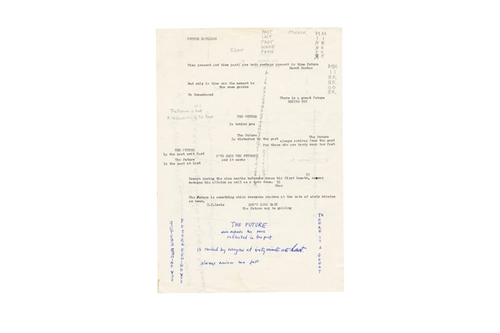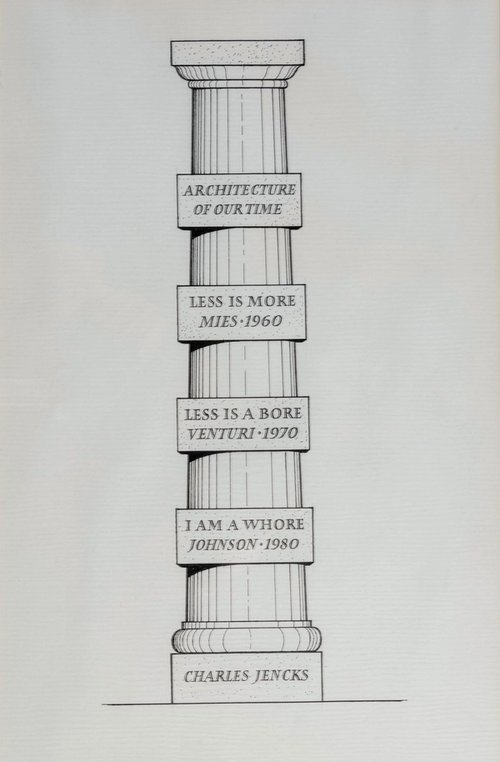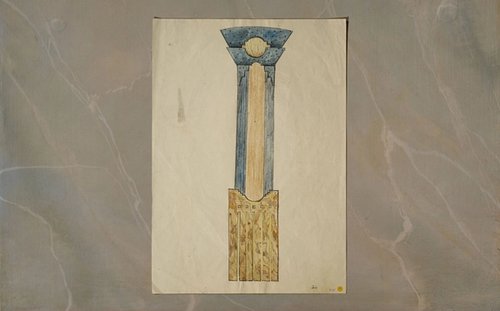In this unrealised proposal for the Time Garden the Scottish poet and artist Ian Hamilton Finlay designed a series of classical elements (a sundial, an obelisk, roman fragments, stone benches, and a pair of herms) which would correspond to the seventeen themes of The Cosmic House as outlined by Charles Jencks in the epigraph in the Cosmic Oval, the original entrance of the house. The typewritten proposal is accompanied by watercolour drawings by Ian Gardner, a frequent collaborator of Finlay’s. This initial proposal was followed by an exchange of letters between Finlay and Jencks, refining the design, but ultimately the proposal was never realised.
Playing on the theme of ‘windows onto the world’, Finlay proposed to incorporate Roman fragments in which the international telephone dialling codes for different European cities were carved into stone in Roman numerals. The Sundial addressed a cluster of themes: cosmic rhythms and symbolism of the Sun and Moon, heat and light, the four seasons and time, as well as literally ‘fixing a place in time’ by indicating date and time accurate for the specific location of 19 Lansdowne Walk. The stone benches proposed to reference the ‘foursquare motif’ by incorporating window-like carved designs into the stone slabs that sat atop the benches. The Herms and the Obelisk introduced eclectic references from history and mythology, covering both classical antiquity and Egypt, references to which are present elsewhere in the house.


